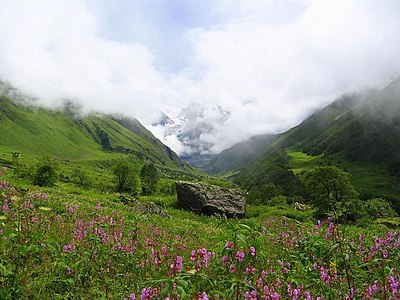Indigenous practices and biodiversity conservation in Uttarakhand
Contents
How indigenous culture has preserved biodiversity in Uttarakhand,Central Himalayas
Contributed by: Mohan Rajinikanth
| In several Himalayan states like Uttarakhand, ecology is highly synonymous with the religions practiced. In the nine districts in Uttarakhand, there are 168 sacred natural sites including 75 sacred forests, 74 sacred groves, 10 water bodies and 9 pastures. In some cases, entire forest areas are dedicated to deities. Let alone resource exploitation, trespassing into the sacred forests is considered a taboo, punishable by the wrath of the deity. As a result, forest areas flourish untouched. The only occasion these areas are accessed, with minimal invasion, is during annual festivals.
Like forests, pastures and water bodies are considered as sacred sites. Only the sacred yak and milk cows are allowed in specific pastures. As such, many of these pastures remain well-preserved. Marmot squirrels, regarded as totems in the area, are fervently protected against killing. Periodically, people climb mountain tops to pay homage to Kathburiya Devi (‘wayside goddess’) by bringing blooming branches of native species; in the process, they inadvertently propagate their species of interest in new locations. People living in the valleys of these mountainous regions carry a spiritual respect for the forests on the mountain tops and are justly rewarded when the forests bring precious rain to the area and protect the valleys from mountain debris and avalanches. This is a wonderful example of religious beliefs and cultural norms, including taboos, tending to the sustainable preservation of forests and associated natural resources and fauna, while propagating native resource species. There is also a high degree of ecological awareness among the locals in these regions. In a survey of 1262 individuals, almost 60% of the respondents were acutely aware that preservation of the water bodies and the vegetation cover was important from an ecological standpoint. Such observations also have important consequences for any developmental programmes, especially those implemented in villages near such sacred sites [1]. |
Reference: Traditional Culture and Biodiversity Conservation: Examples From Uttarakhand, Central Himalaya; Chandra Singh Negi, Mountain Research and Development, 30(3):259-265. 2010. International Mountain Society
References
- ^ Traditional Culture and Biodiversity Conservation: Examples From Uttarakhand, Central Himalaya by Chandra Singh Negi, Mountain Research and Development, 30(3):259-265. 2010. International Mountain Society.Retrieved: August 14, 2011
Comments
blog comments powered by DisqusMore notes like this
| |||||||||||||||||||||||||||||||||||||||||||||||||||||||||||||||||||||||||||||||||||||
Only 15 articles are shown in this list. A total of 64 articles in the database as of this moment. For the complete list, click on further results on the bottom right corner of the above table.
Semantic tags
- Browse all Semantic Tags associated with this page
- Find more pages and articles created by the community by clicking this link.
| Title | How indigenous culture has preserved biodiversity in Uttarakhand,Central Himalayas | Article is on this general topic | Indigenous practices | Author | Rajinikanth Mohan |
|---|---|---|---|---|---|
| Specific location(s) where study was conducted | Not noted | General region where study was conducted | Not noted | State where study was conducted | Uttarakhand |
| Institutional affiliation | Not noted | Institution located at | Not noted | Institution based around | Not noted |
| Species Group | Not noted | User ID | User:Rajinikanthm | Page creation date | 2011/09/17 |
Share this page:
